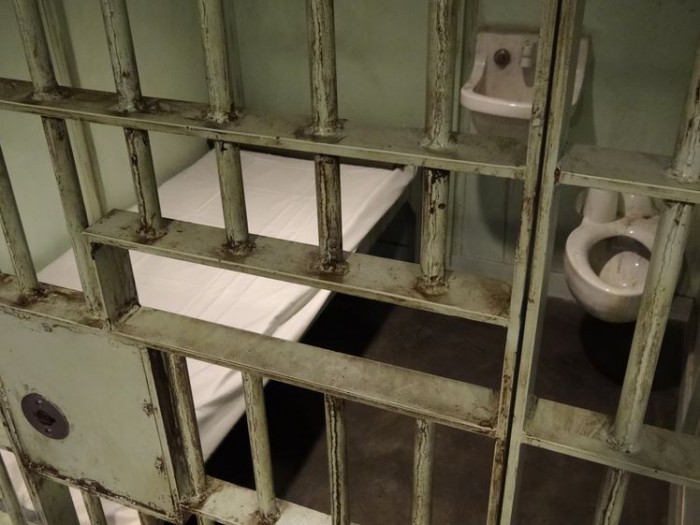Expectations are not easily left behind.
When I first walked into the juvenile detention facility where I would be leading yoga classes, I was full of expectation. It was the first class hosted in this facility, my first experience with the justice system and my most recent encounter in a long line of stressful experiences with ‘at-risk’ youth.
I expected the kids to give me a rough time.
I expected to be well received by the staff, who seemed so excited about the new program.
I expected to have my heart broken, as I often have a hard time creating emotional boundaries within myself.
I expected to be overwhelmed.
Most of all, I expected to have an impact.
This is the part that I’m still wrestling with, months after I first stepped into that cold concrete building.
Yoga reminds me to practice kindness. These kids that I meet, they need a little kindness. They are so eager to connect with someone from the world outside.
After my first class, there were so many questions: “Where do you do yoga?” “Can yoga help my back/me sleep/make me skinny?” “Where did you get your pants?” But the first question asked, and perhaps the most important, was this: “When will you come back?”
The comment that hit home the hardest, “I wish we could do this every day.”
Now, I’m used to juvenile detention—juvy. I know what to expect. I’m used to the tough kids, and the eager ones. I have a few tricks up my sleeve to redirect undesirable behavior, and am comfortable joking around with the people who show up to practice. Some days I get the impression that the kids would be as happy to sit and chat as they are to do yoga. When that feeling bubbles up in class, I am reminded of the limited positive human interaction that is available in this particular justice facility.
Juvy is a cold place, a gray place, not somewhere that we might open up and peek inside ourselves; rather a place that encourages us to shut others out, enveloping ourselves in layers of protection in the form of toughness and apathy.
Before each class, I ask what the kids expect to get from their practice that day. Often it’s cut and dry: to sleep better, to fix an achy back or get out of their cellblock. Afterwards, when we revisit these expectations, they often say they’ve been met, or perhaps a different, previously unnamed need was met.
I’ve yet to have a kid tell me that they feel worse than when we started.
By considering and naming what we expect to reap from an hour of action, my fellow orange-clad yogis and I sometimes consider and name expectations that might result from other actions.
This translates well into what we wish for, and what we can do to manifest that reality.
Sometimes, kids shut down here. Other days, they get excited start filling the gray space in that juvy has carved into their lives. Usually, they lay out steps that lead away from the substances or the friends that lead them into their current state of affairs—not always.
More than once, someone’s end goal has been a cigarette.
By examining what is expected of us, and what we expect from our experiences, our worlds and ourselves, we can start to see things a little more clearly.
There’s a quote that has resonated with me, and as I type this it comes to mind.
“We don’t see things as they are, we see them as we are.”
I am a yoga teacher, and I see yoga as a tool for growth. I see little tiny specks of yoga love growing. I hope to water them and nurture them, and provide it to the kids who need that little bit of encouragement. I expect all of this to somehow, somewhere, help someone.
The kids in juvy can’t put down their arms, for fear of showing the cracks in their fragile defenses. They struggle to create a balance between the few moments of rawness that I sometimes sense during practice, and the quickly rising walls that make themselves visible at the slightest recognition of vulnerability.
My role is to do yoga with the kids. I am not there to fix anyone, to solve any problems or provide any guidance other than the guidance I give on the mat. The difficulty here is that yoga does not stop at the four corners of the sticky mat. It can be as simple as exercise, but I’ve yet to meet someone who truly stops their practice at the studio doors.
Yoga always follows us home, breathing in our ear as we prepare our meals, or nipping at our heels as we get ready for work. Yoga is there, pushing us to make moves, to stand a little taller or to sit a little easier.
So, knowing my place in the big picture here is on my mat, and only on my mat, what kind of impact do I expect to have? Savior? Teacher? Friend? Councilor? Link to the world beyond? If I’m honest with myself, perhaps I’d initially hoped to be a little bit of everything—a reminder that things can be okay, a little bit of light in a very grey place.
But I can’t be those things for these kids. It’s not my place.
What I want for them, and for myself, does not make it so. Instead, by looking at the impact that I wish to have and examining the experiences I’ve had so far, perhaps I can help myself fulfill the role of yoga teacher and help those whom I teach help themselves.
Yoga teaches us to move forward, through time and space, without expectation. How we manage this is up to the individual.
For more information about awesome yoga and meditation programs in the justice system, check out www.yogabehindbars.org
Love elephant and want to go steady?
Sign up for our (curated) daily and weekly newsletters!
Editorial Assistant: Alicia Wozniak / Editor: Renée Picard
Photo: wikimedia commons












Read 2 comments and reply